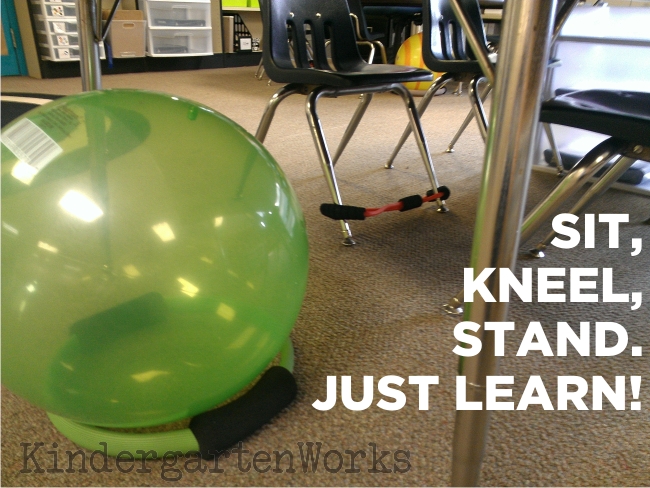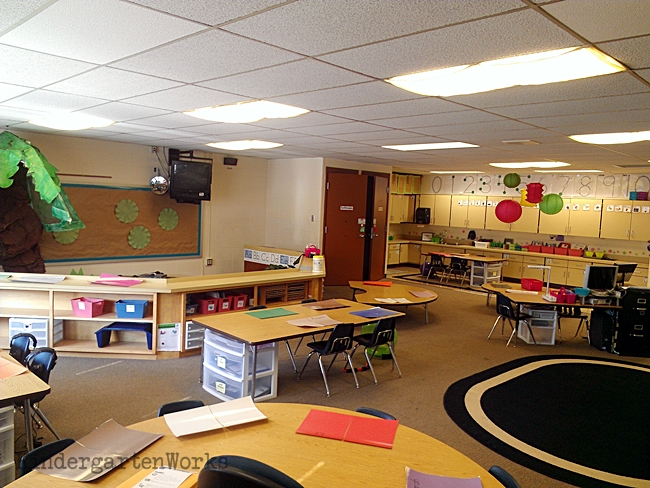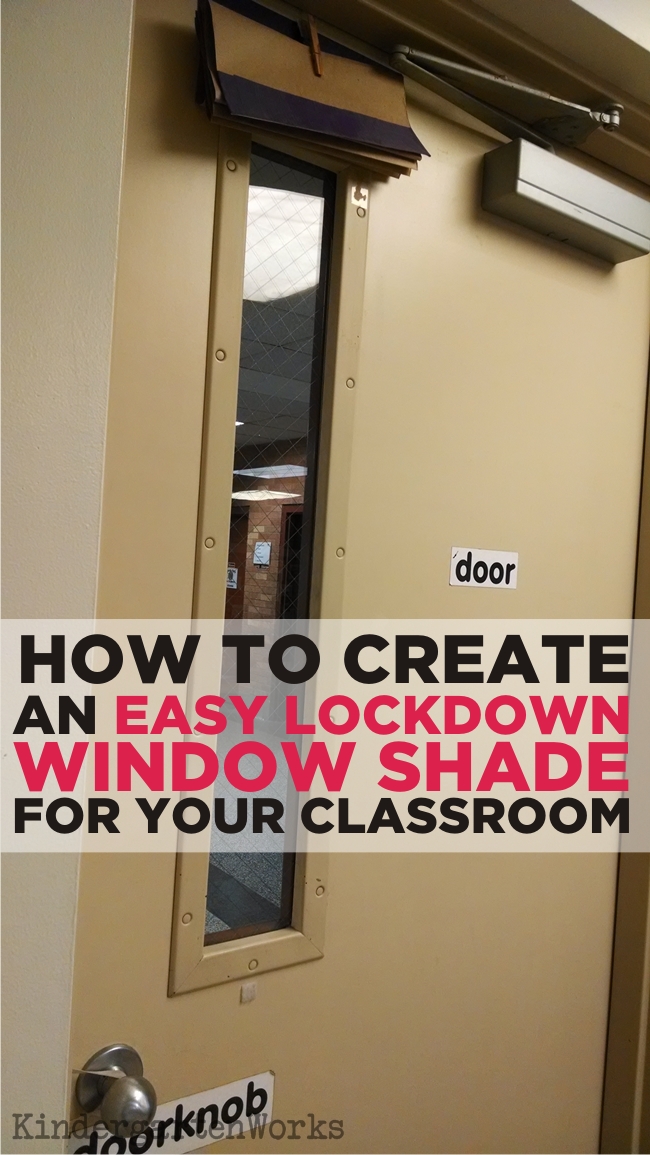Alternative Seating in Kindergarten – 6 Frequently Asked Questions
There’s so much to be said for offering choice in the classroom. Here is an additional way to offer choice to students using alternative seating in kindergarten. Yes, you can totally do this in kindergarten and it doesn’t matter when you start. I’ve started it on day one and also after the year was already under way.
I like the idea of offering choice whenever possible. I’ve always built choice into my year-long literacy centers and loved the results of having empowered learners.
When I decided to get rid of my teacher desk and I began to rearrange furniture… the whole experience snowballed into questioning why each student had to have a “seat.” I had no idea what the alternative would be, could or should be.

So I did exactly as I write about on this blog… I thought about it. It’s part of my process – it’s what I do.
Alternative Seating in Kindergarten
Then I jumped in to using flexible seating without having all of the answers and every detail figured out. Students came back after a weekend and the room was completely different.
They loved it and so did I.
The initial excitement of the novelty of it all, turned into buzzing productivity that lasted for the rest of the year.
The next year I started with brand new kinders. On day one, we just did school. For me, it didn’t seem to feel radically different like I anticipated. And for my new students, well… they didn’t know any different.

What ended up really working for us was using art folders or workmats. We used them heavily the first month of school and then used them as needed to keep projects organized.
Students used their pencil boxes for help writing their name if needed – or their workmat, or their cubbie or their name somewhere else since it was printed in a gazillion different places.

It soon became very normal for my kinders to be found practically all over the room and even under the tables regularly. My philosophy really became, “sit, kneel, stand – just learn!” It was freeing for me. I didn’t expect that.
Alternative Seating FAQ
Several questions have popped up over time that I thought may be helpful to compile for you.
What alternative seating options do they regularly have?
Almost every time there was work to be done, students would have a new choice. They could lay on the floor, sit on the floor, sit on a chair/ball chair/crate, sit/kneel at a low table, stand at a shelf or stand at a table. (affiliate link)

And I personally was cool with students creating or re-arranging seats as needed.
For example if they wanted to pull a ball chair up to a counter or move a crate to use as a mini-table that was cool with me as long as they put everything back. They often enjoyed using lap boards to work on the floor.
Where do students do a whole group activity?
Well, just like your kinders, I suppose – we sat on the floor in our whole group meeting area. {wink} If I was teaching to the whole group, I’d do it with them as close to me in proximity as possible. It’s just developmentally appropriate that way. If we needed a writing platform they would use a clip board/lap board (like for guided drawing) or have their calendar binders in their lap.
So, did I get rid of painting since not everyone had a “seat” in our room? Heck no.
We just modified the general work options available. If we were doing a “project” then we would use all table spaces. It doesn’t matter what the table is usually used for, if it was needed for space – we used it!

Want to see this in practice? Here is a conversation on whole group projects that you may find helpful – it has more pictures.
I did limit the type of work space in these types of situations since we had to share materials. A floor-space just doesn’t really work well in messy-project situations and they quickly learn that with alternative seating options.
Did you have to get permission?
Um, no. And to be transparent – I didn’t ask either.
I was excited and knew it was right for both me and my kinders. I shared the new concept shortly after putting it into play. I also figured that I could always adjust back if needed {with fingers crossed}.
The janitor who helped move out tables may not have loved me in that case, but since it worked so beautifully we never had to test that theory. I did use this type of seating setup this with two different principals.

How many chairs do you have in your room?
I didn’t have a “dedicated” chair for every student. Meaning that each student didn’t have an assigned seat/chair as you’d picture in the traditional classroom pushed up to a desk/table with a name tag.
There were 6 kinder height chairs at my guided reading teacher table, 5 at each of two rectangular (regular height) tables, and 4 at the listening center table, 2 at a small document camera table, 4 at the computer table and 2 at a small entry table. This worked for my largest class size of 27.
Needing seats was never an issue. They just needed a “space.”

Do students fight over different types of spaces?
There is some novelty with different seating and work spaces which can mean having additional classroom expectations. As the work space options became more familiar, there weren’t any long term issues. The benefits far outweighed the little things I had to figure out alongside my classes.
Most students settled into 2-3 favorite types of work spaces and used them as their little bodies needed and the activity permitted. I love that they had to think through the type of work space, prepare it (in some cases), and clean it up.
Do they have to pick the same type of seating all day?
Nope. The expectation became that if you chose a spot to work, then that became your spot for the length of that activity. It just made sense for cleaning up.

What type of ball chair (and size) do you recommend for kindergarten?
I totally went the overnight route and headed to Walmart. I purchased the largest bouncy balls I could find to even test out the idea. I used yoga rings to keep them in place. While they did last a year, I’m not positive the size is consistent enough to recommend them to everyone to go grab from their own local store.
I will highly recommend these (affiliate) ball chairs with feet for kindergarten. At around 45 cm (18 inches), they are a great size and the feet are an added bonus. They are the same brand and size as the entire class set my favorite teacher down the hall uses.
I hope putting those links, pictures and questions all in one place is helpful if you’re considering revamping the way you approach seating in your own classroom.
If you’ve already given it a go – weigh in with a favorite tip to share with others!
You’ll get my best on making the most of your classroom and be on your way to making it happen!







Hi! I stumbled across your blog today and I am loving what I am reading! One question I have that no one seems to be asking is meet the teacher night. How do you handle or organize meet the teacher night, so that not have enough chairs or designated spaces is not an issue? Thanks!
Hi Brittney,
Thanks and welcome!
At meet the teacher night (and maybe the first couple days of school) is usually the only time that the parent questions come up, honestly. I didn’t experience parents asking if there were enough chairs – but they did ask if their child would always have to sit at the assigned space. Some seemed a bit put off at first that their child didn’t have a traditional chair, though that isn’t what they said out loud.
I simply explained that their child will have the opportunity to work everywhere in the classroom and only be using this designated space (see this for that info: https://www.kindergartenworks.com/classroom-setup/roll-student-work-spaces/) while they are learning the routine of the classroom. It will only last a few days. And I explain that we are only there for a few minutes at a time to work and students usually love working at all the different kinds of places.
Thank you for your quick response!!! Also on the same topic, what about how parents fill out paperwork/information forms and turn it in. I’ve always had parents go to their child’s spot where all those things were waiting for them, but I’m not sure that would still work with flexible seating. I’m overthinking this lol, but I want to start out on a good foot when I roll this out next school year!
Ah… simply use a post-it note! Check that out here: https://www.kindergartenworks.com/classroom-setup/roll-student-work-spaces/. You just use it temporarily as a holding place but it could work the same way.
I attempted flexible seating but never quite figured out where students should keep their “stuff”. Mine currently have pencil boxes, work folders, and a math journal. Do you use common supply areas or storage or how do you help students keep up with their things?
Hi Mary Ellen, Here is where mine keep their stuff 🙂
– Leslie
https://www.kindergartenworks.com/classroom-setup/alternative-seating-setup/
Hello!
We have started flexible seating this year in my Kinder classroom. We were funded through donors chose to receive ball chairs and wobble stools! Until they arrive I have been experimenting with floor seating, scoop chairs, and standing spaces. I am still struggling with the morning arrival. My students come between 7:15-7:35. I typically have morning boxes out for them to work on in the mornings. Currently I still have name tags on spots until we receive our materials and rotate through trying them all. What do you do in the morning? Do students come in and pick a space? Do you use morning work? Any suggestions to help make this process easier once the name tags disappear is greatly appreciated! Thank you
Hi Megan – congrats on taking the plunge! I’m excited that your new chairs on on their way. Very cool.
My students started out the morning by picking their space (after a few days at the beginning of the year – when I had removed their name tag post it notes) just as they did the rest of the day. Our morning work varied… at the very beginning of the school year – they had a page in a handwriting booklet to do and then they’d get a printable reader to color in and add to their book pockets. Then we would do 1 of 4 things (of which I’d pick): read to self, read to a partner, writer’s workshop or finish up something from the day before. After the beginning, we’d finish a page in our calendar binders before moving onto 1 of the 4 things. I tried to make those things open ended so that way our mornings wouldn’t be rushed.
Potentially you could just keep their spaces assigned in the morning (like attached to the morning work boxes or something) until they’ve rotated through them all, but start to make the assigned spaces disappear for the rest of the day’s activities. Just an idea!
Thanks,
Leslie
Leslie,
Thank you for all of this information! I completed my student teaching in a classroom with alternative seating for first graders. I am now going to teach kindergarten and use the same concept!
Do you have any research supporting the use of alternative seating in K? Also, do you notice any issues with handwriting? (These are concerns I have to address at my new school) Thank you for your time and insight!
Hi Shannon,
That’s great to hear. I don’t have any research to share on the subject, sorry! I saw improvement in fine motor skills when students could lay on the floor (like color while laying on their bellies) or choose to cut while standing (for those who otherwise had difficulties). I never saw a negative impact in progress towards handwriting – it was more about the activities that we planned (to practice and develop fine motor skills) more than where and how they sat. 🙂
Where did you get your black and white circle rug? I LOVEEEE it!
Oh man, I wish I could remember! We ordered it years ago from a catalog. It hid dirt really well 😉
– Leslie